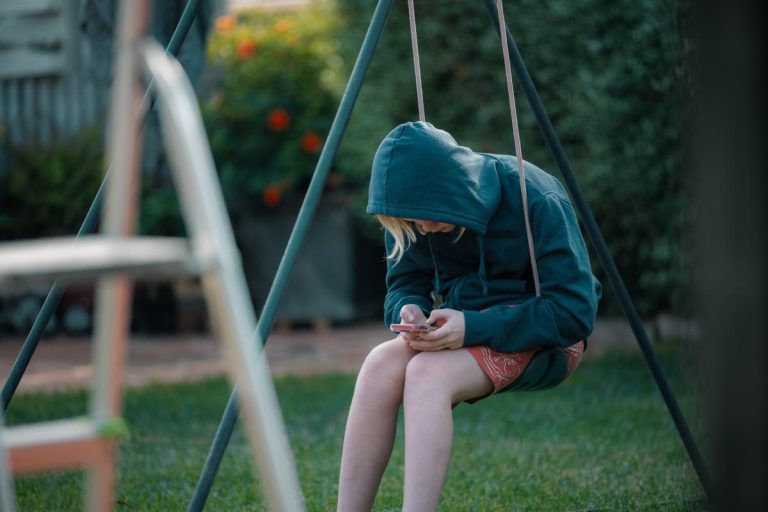The Double-Edged Sword: How Social Media Impacts the Developing Minds of Children and Adolescents
The digital age has ushered in unprecedented access to information and connectivity, transforming the way we live, learn, and interact. Social media platforms, in particular, have become integral to the social fabric, especially for young people. However, this increased engagement coincides with a critical period of brain development, raising concerns about the potential impact of these platforms on children and adolescents. The developing brain, particularly between the ages of 9 and 16, undergoes significant structural and functional changes, making it more susceptible to external influences, including the pervasive presence of social media. While offering opportunities for connection and learning, these platforms also present potential risks, demanding a careful examination of their influence on the developing minds of our youth.
The prefrontal cortex, the brain region responsible for executive functions like self-control, decision-making, and impulse regulation, is still maturing during adolescence. Excessive screen time, a common consequence of heavy social media use, has been linked to alterations in this crucial area. Research suggests that prolonged exposure to screens may affect the development of the prefrontal cortex, potentially leading to difficulties with impulse control, attention, and emotional regulation. Simultaneously, the amygdala, the brain’s emotional center, is also undergoing significant development during this period. The constant stream of notifications, social comparisons, and the pressure to maintain an online persona can heighten anxiety and stress, potentially leading to structural changes in the amygdala over time. This heightened emotional reactivity can contribute to increased vulnerability to anxiety disorders and other mental health challenges.
Compounding these developmental vulnerabilities is the design of social media platforms, often crafted with adult users in mind. The business models driving these platforms often prioritize engagement and user retention, employing features designed to maximize time spent on the site. These features, while appealing to adults, can be particularly problematic for young users, whose developing brains are more susceptible to addictive behaviors. Recommender systems, for instance, utilize sophisticated algorithms to suggest content, friends, and products tailored to individual preferences. While these systems can be beneficial in connecting users with relevant information and communities, they can also create echo chambers, reinforcing existing biases and limiting exposure to diverse perspectives. Furthermore, the constant stream of personalized recommendations can fuel addictive patterns, making it difficult for young users to disengage from the platform.
The escalating use of social media among children and adolescents is a stark reality. Data from across the European Union reveals a significant increase in online time spent by teenagers compared to younger children. On average, 14 to 16-year-olds spend almost double the amount of time online as 9 to 10-year-olds, highlighting the growing influence of social media during these formative years. This increased exposure, coupled with the developmental vulnerabilities of the adolescent brain, necessitates a closer examination of the potential consequences. While some may argue that social media provides valuable opportunities for connection and learning, the potential for harm, including addiction, anxiety, and exposure to inappropriate content, cannot be ignored.
The addictive nature of social media stems from the constant feedback loop of likes, comments, and shares, which trigger the release of dopamine, a neurotransmitter associated with pleasure and reward. This dopamine rush reinforces the desire to engage with the platform, creating a cycle of dependence. For young users, whose brains are still developing the capacity for self-regulation, this can lead to excessive use and difficulty disengaging, even when they recognize the negative consequences. The pressure to maintain an online persona, curate a perfect image, and constantly seek validation can contribute to anxiety, depression, and body image issues, particularly among adolescents who are already grappling with issues of identity and self-esteem.
The challenges presented by social media use in young people demand a multi-faceted approach. Parents, educators, and policymakers must collaborate to create a safer and more informed digital environment for children and adolescents. Parents need to be actively involved in their children’s online lives, engaging in open conversations about responsible social media use and establishing healthy boundaries around screen time. Educators can play a crucial role in promoting digital literacy, equipping young people with the critical thinking skills necessary to navigate the complexities of the online world. Furthermore, policymakers need to consider regulations that protect children from the potentially harmful aspects of social media, including addictive design features and exposure to inappropriate content. By working together, we can harness the positive aspects of social media while mitigating the risks, ensuring that these powerful tools contribute to the healthy development of our youth rather than hindering it.


